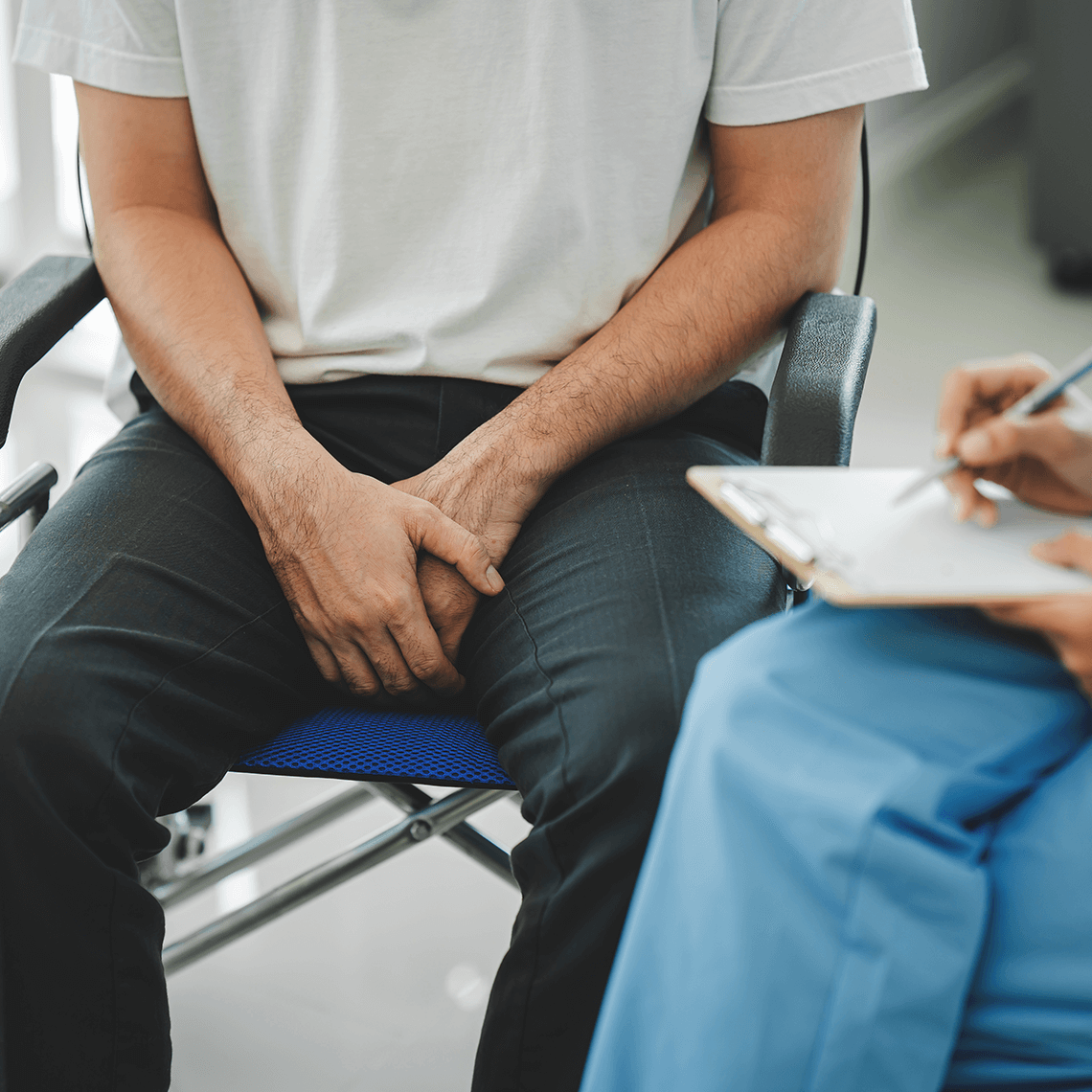Podcast
Hospitalists Face Worsening Malpractice Climate
Oct 27, 2021

Commentators
- Adam Schaffer, MD, MPH
Transcript
As the hospitalist subspecialty continues to expand, new research indicates the malpractice environment for hospitalists may be getting worse. Other related specialties have seen declines in their rate of malpractice suits, some quite significant. But hospitalists have seen the severity of cases go up, while their rate of claims remained steady or worsened slightly.
Dr. Adam Schaffer is a hospitalist at Brigham and Women’s Hospital in Boston and was the lead author of the study, which was published in the Journal of Hospital Medicine in June 2021. Dr. Schaffer is also Senior Clinical Analytics Specialist at CRICO. He joins us now to talk about this research.
Q.) Hi Adam, thank you for joining us.
A.) Thank you for the opportunity to talk with you today.
Q.) Why did you decide to study hospitalists? Is there something about the clinical environment of hospitalists that made you want to focus on this area?
A.) There were a few factors that made us think that hospital medicine was a specialty worth studying, in addition to my interest given that I practice at the hospital. For one thing, there has been a tremendous increase in the number of hospitalists who are practicing. Currently, there are upwards of 50,000 hospitalists practicing in the U.S. Second, hospitalists are being asked to take on growing responsibilities. Specifically, hospitalists are being tasked with assisting in the care of surgical patients. Also, more and more hospitalists are providing care overnight, assuming roles referred to as nocturns. With these added responsibilities taken on by hospitalists, we thought there was a possibility that the malpractice risk environment may have changed and figured this was worth exploring.
Q.) Fair enough and what was your goal?
A.) Ultimately, the goal of our analysis is to try to promote safer care by looking at what went wrong in malpractice claims and considering how we can avoid similar adverse events in the future. One of the really valuable aspects of the data we used is that the claims are examined by nurse coders who extract information from the case file, such as the contributing factors underlying the adverse event given rise to the claim. This very, very helpfully allows us to gain an understanding of what is going wrong in the practice of hospital medicine, which in turn helps us design ways to make care safer.
We know also, we know defensive medicine is expensive with studies showing that 13 to 38 percent of hospitalists' health care costs involve at lease some degree of defensive medicine. I think there is also value in helping clinicians understand their true malpractice risk, so that their level of concern about medical liability is proportionate to their actual risk.
Q.) So what were some of your key findings? We know the hospitalists weren't doing as well as some specialties over the same time in their malpractice rate. What else did you find?
A.) As you noted, one of our main findings concerns the malpractice claims rate of hospitalists. The overall trend in claims rate is that they have been going down for nearly all specialties. For instance, an analysis of data from the National Practitioner Data Bank found that the rate of paid malpractice claims overall has decreased 55, almost 56, percent over a roughly 20-year period from 1992 to 2014. Similarly, the downward trend in claims rates over time was a principal finding of 's 2018 benchmarking report, Medical Malpractice in America. Despite the overall downward trend in malpractice claims rates, we found that the trend in the claims rates for hospitalists was a nonsignificant increase. This caught our attention because it contrasts with the trend we are seeing for nearly all other specialties.
Another notable finding is the high severity of injury we saw among the hospitalists' claims. Over 50 percent of hospitalists' claims involved the death of a patient. The percentage of cases involving high severity injury and death were significantly greater for hospitalists compared to that of the other specialties that we looked at. Of the six specialties we examined as part of the study, hospital medicine was the only one in which the percentage of cases involving death exceeded 50 percent. So this high severity of injury was something that really stood out to us.
Q.) I imagine that's something you could kind of anticipate, given the nature of the work.
A.) Yeah, probably at least one of the factors behind it, at least in terms of the clinical severity, is at least one of the factors is probably the increasing acuity of patients in the hospital. As the patients that we see in the hospital are getting sicker—and there is data to support that overall trend, at least for some hospital populations—as they are getting sicker and higher acuity, we would expect that the malpractice claims rate involving them would probably involve higher severity of injury.
When it comes to what we found in terms of the trend in claims rate, that we think is probably due to a different factor, potentially the large expansion in the number of hospitalists in the U.S. Many young physicians have entered the field of hospital medicine, and we know that hospitalists in their first year of practice have higher mortality rates than more experienced hospitalists. Therefore, the relative inexperience of hospitalists driven by this high demand within the field could be putting them at increased risk of medical errors and resulting malpractice claims. So one of the upshots from that is we need to make sure that young physicians entering the field of hospital medicine have the training and mentorship they need to be able to practice safely and succeed.
Another factor we think may be contributing to the fact that hospitalists claims rates are not going down has to do with the increasing sort of collaborative nature of the practice we're seeing among hospitalists. One question we tried to answer was what other specialties were being named along with hospitalists in malpractice claims. The clinical service most commonly named in hospitalists' claims was nursing and two surgical services were in the top five services named in hospital claims, specifically general surgery and orthopedic surgery. And with hospitals being asked to play an increasing role in the care of surgical patients, they may be providing care to patient populations with whom they have less experience, which could put them at risk of adverse outcomes leading to malpractice claims. Hospitalists need to be attuned to the liability risks that are related to the care of patients requiring surgical treatment.
With all our findings we're always trying to think, how can we use this information to try to make care safer. One way to promote safer care of patients being cared for by hospitalists and surgeons is to create a clear delineation of responsibilities. One factor that can lead to adverse events that I think warrants more attention is diffusion of responsibility; in which one specialty may assume the other specialty is taking care of an issue and so the net effect is that no one is addressing the problem.
To provide a concrete example: if a surgical patient being cared for by a hospitalist develops a surgical site infection, it would be reasonable for either the hospitalist or the surgeon to begin antibiotics to treat the infection. However, if each thinks the other person has responsibility for this, there is a risk that the antibiotics don't get started at all. As an example, the type of delineation of responsibility that I think should occur for patients that a surgeon and hospitalist maybe both caring for, it can be agreed upon, for example, in advance that the surgeon will be responsible for starting antibiotics for an infection involving the surgical site whereas the hospitalist will be responsible for starting antibiotics for infections involving other sites, say a urinary tract infection or pneumonia.
Q.) What other measures would you recommend for hospitalists or hospitals to enhance patient safety based on the findings in this study?
A.) Yeah, that's a key question and to get at this question, we performed regression modeling predicting whether a case closed with payment using the contributing factors as predictors. In other words, we wanted to determine what contributing factors made it more likely that a case closed with a payment being made to the patient.
The most important contributing factor was an error in clinical judgment. In finding system-level interventions or system-level measures to promote improved clinical judgment is a real challenge. Some examples of efforts in this area that I think are worthwhile are clinical decision support systems such as sepsis risk alert.
Another example which I've seen become more prominent recently is improved alerts for QTC interval issues. The QTC interval is an EKG feature that when prolonged can put you at risk of a dangerous heart rhythm if you are given certain medication and to prevent this from happening, you need to know the most recent QTC interval of the patient and the risks posed by the various medications that the patient is receiving. Clinical decision support systems are well suited to combine this information in an automated way and alert clinicians when this risk is elevated.
The importance of clinical judgment in our study also suggests a risk management strategy, which is clearly and contemporaneously documenting the rationale or the thinking behind one's clinical decision making. This can help make a claim more defensible in the event of an adverse outcome by demonstrating that the clinician was acting reasonably based on the information available at the time.
The importance of specifying a rationale for a clinical decision may be especially important in the era of electronic health records or EHRs. This I think is an interesting nuance that some of my colleagues in the Claims Department describe to me. So EHRs are not structured as chronologically linear charts which can make it more challenging during a trial to retrospectively show what information was available to the physician at the time the clinical decision was made, so it's really important that at the time that the physician is making that decision, especially if it's high-stake decision, that they specify what their rationale is so that if that comes into question later, it's clear why they made the decision they made.
Another factor that we found is important in predicting a case closing of payment is deficient communication. Returning to the example of the hospitalist and surgeon collaborating on the care of a patient, not only do you want to delineate who is responsible for what aspects of the patient's care, but you should also systematize the communication between the hospitalist and surgeon. This could take the form of ideally having a set time in the morning or the afternoon in which the hospital medicine team and the surgical team round together on the patient, or at least there needs to be a set time where you have a discussion about how the patient is doing and what additional diagnostic testing or treatment may be indicated.
Q.) Thank you, Adam. This is really important work, and I appreciate you stopping to share it with us.
A.) Yeah, once again, thank you so much for the opportunity to speak with you, I appreciate it.
Q.) Dr. Adam Schaffer, hospitalist at Brigham and Women's Hospital in Boston and Senior Clinical Analytics Specialist for CRICO. I'm Tom Augello for Safety Net.
About the Series
We’ve got you.
Our Safety Net podcast features clinical and patient safety leaders from Harvard and around the world, bringing you the knowledge you need for safer patient care.
Episodes
$1.5 Billion in Miscommunication: Medmal Data Report Finds Opportunities

Case Dismissed! Every Medical Defendant’s Dream Still Holds Some Nightmares

Expert: Communication Is Top Fix for Prostate Care Allegations

